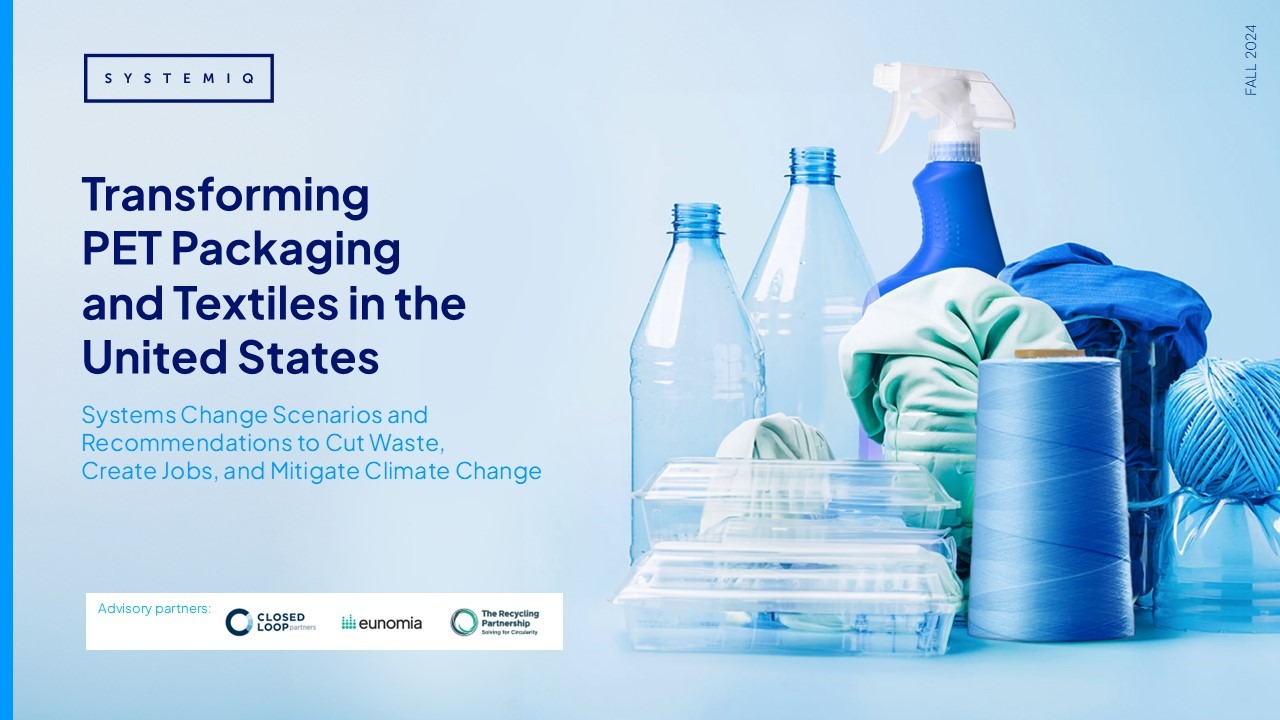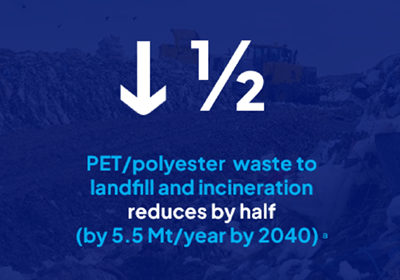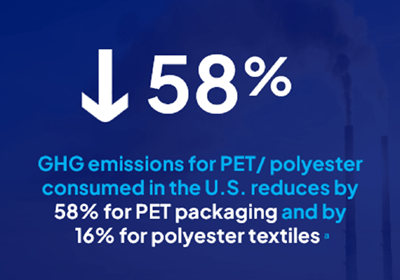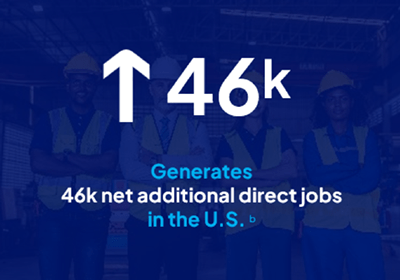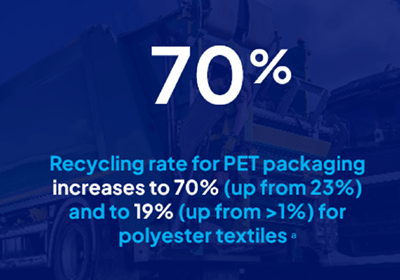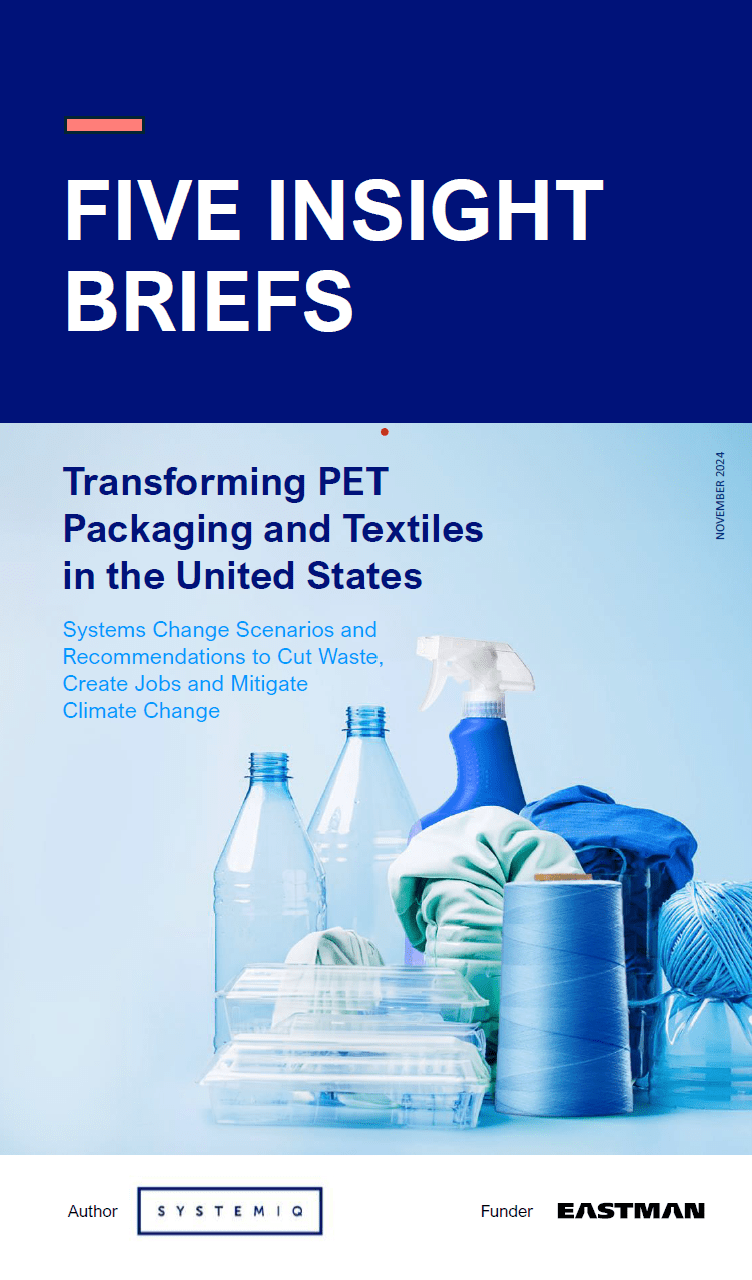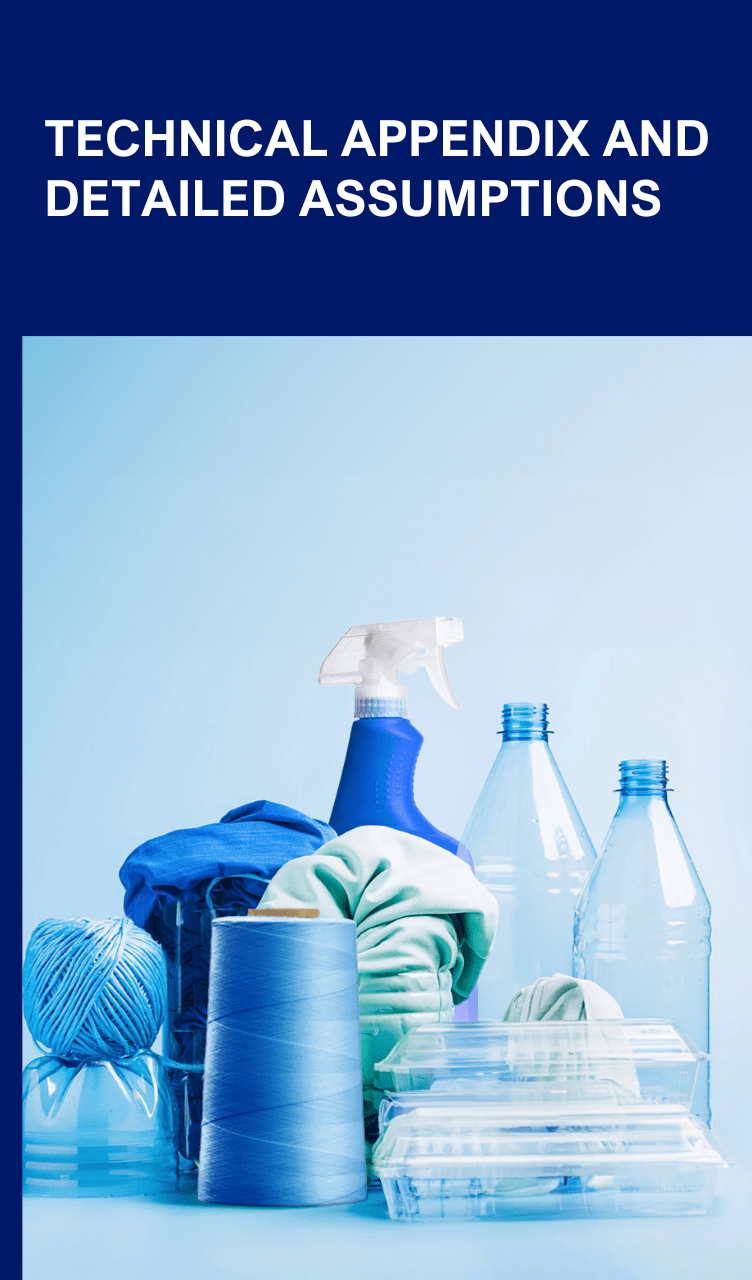Consumers in the United States discard over 100 billion PET bottles and over 10 billion polyester garments each year.
Found in products ranging from food trays and active wear to carpets, PET and polyester account for 30% of the country’s plastic packaging and textiles use, contributing significantly to plastic waste and greenhouse gas emissions. Yet they also have high potential for circular economy approaches that reduce waste and emissions and create economic opportunities.
Transforming PET Packaging and Textiles in the US
A new study, published by Systemiq with support from Closed Loop Partners, Eunomia and The Recycling Partnership, outlines a comprehensive roadmap to transition the US PET packaging and polyester textile industries: from the current linear, single-use model towards circular, low-waste and low-emission systems by 2040.
If current trends continue, PET/polyester consumption could grow 1.5 times by 2040, resulting in 13 million metric tons of waste being sent to landfill and incineration annually – equivalent to 750,000 garbage trucks. By that point, greenhouse gas emissions from domestic PET/polyester production would be 2.5 times higher than the levels needed to meet the United States’ emissions reduction targets.
But moving these industries away from their linear, single-use model – and towards circular, low-emission systems – could cut waste, create U.S. jobs and mitigate climate change.
Circular economy approaches offer significant benefits by 2040
The study emphasizes the transformative potential of ambitious and complementary circular economy approaches, including reducing avoidable material use, scaling packaging reuse and textiles resale, as well as expanding mechanical and depolymerization recycling.
By 2040 this transformation could result in substantial environmental and economic benefits:
Call for ambitious legislation, industry action & technology scale-up
To fully unlock the circular and low-emissions potential of PET and polyester, the report ‘Transforming PET Packaging and Textiles in the United States’, calls for swift and bold action from U.S. policymakers and industry leaders. Key measures include enacting well-designed EPR laws in more states, scaling new recycling technologies, driving industry innovation to reduce consumption and waste, and increasing reuse, collection and recycling initiatives.
Further resources
‘Transforming PET Packaging and Textiles in the US’ was prepared by Systemiq with strategic guidance from an independently-chaired Steering Group with diverse representation from industry, civil society and academia. While the report was financed by Eastman, the Steering Group helped ensure its independence and unbiased nature. Responsibility for the information and views set out in this publication lies with the author.


